Side dots.
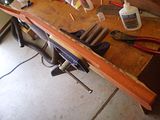

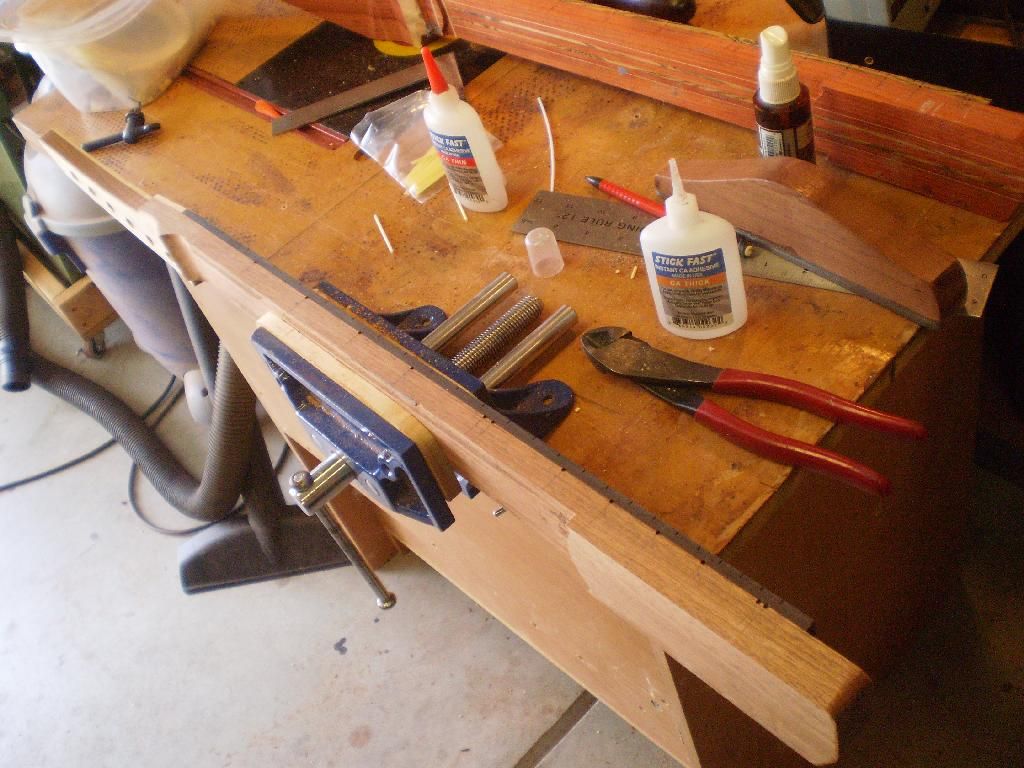
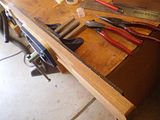
Tuner holes.
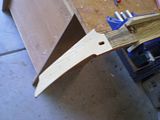


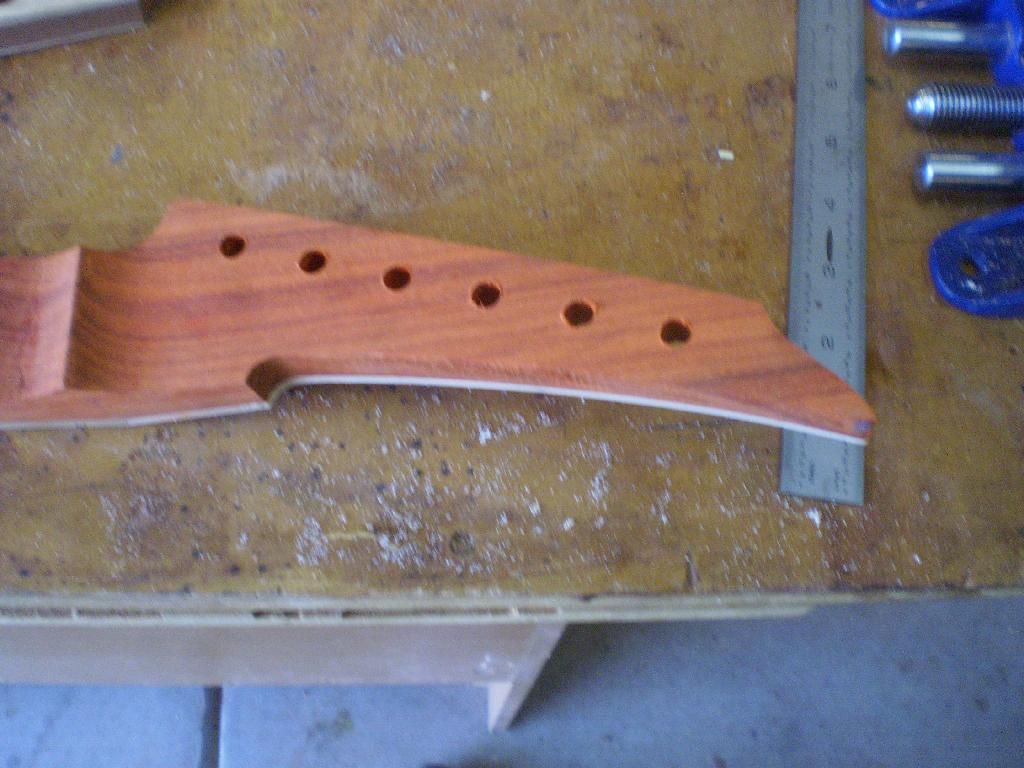
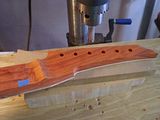

I have grown tired of trying to clamp necks to the bench for fretboard radius and leveling. Decided it was time for a better jig. I already do the pre radius on the big belt sander but getting it right requires hand sanding.
The idea is to wedge the unprofiled neck in between some dowel rod pins while supporting the neck so it doesn't flex while sanding. Flex is your enemy. It is why you sand on a fretboard for 20 minutes and it still has a bow in it... if you eliminate the flex in your sanding blocks and in your neck this whole process will only take 15 minutes. So I lost a good 2 hours building the jig but gained it all back using it that afternoon.

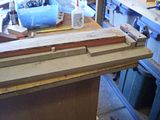
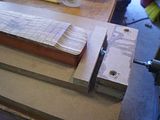
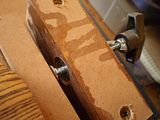
Since the back of the neck is supported I needed a block to go under the heal for support and to use as a clamp. Most of my necks from the cnc have the same profile but some of the others are different so I need different size heal supports.
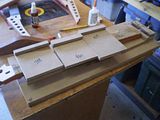
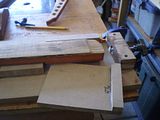
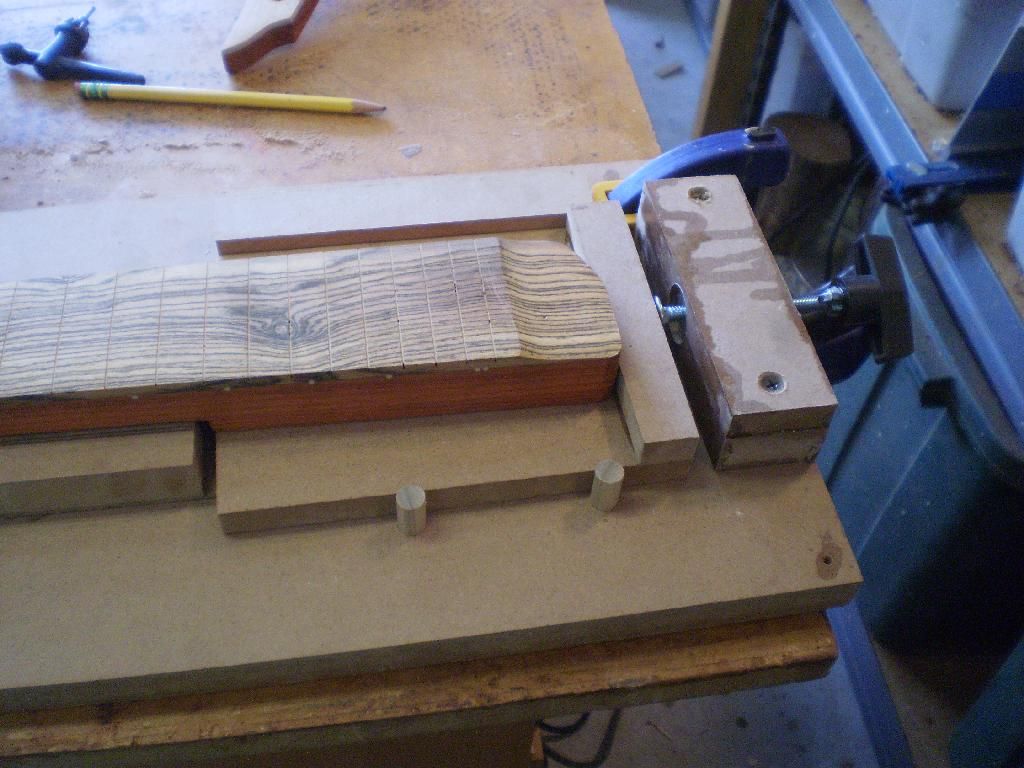
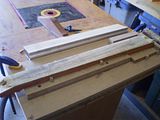
Worked better than I had hoped.
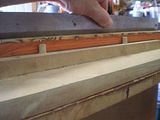
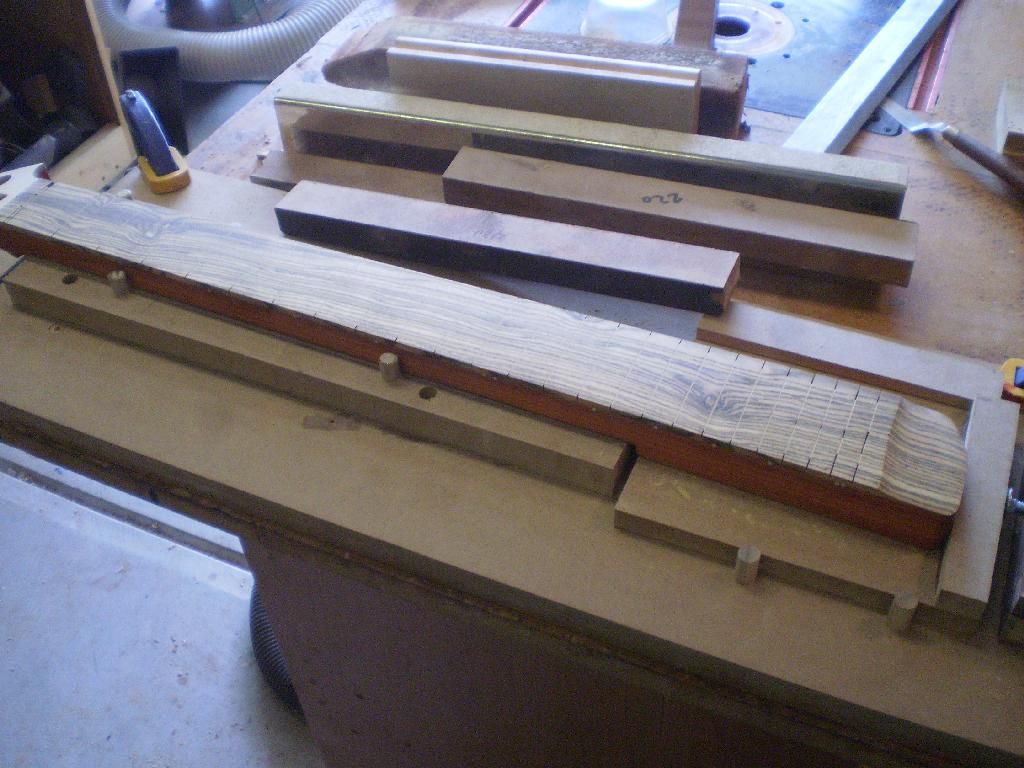
Using some MDF and the jointer (for the edges) I make some finishing sanding blocks. Wet/Dry 220, 320, 400 and some contact cement. I throw them away when they are done. Since they are more for polishing the MDF is usually straight enough although I do check it with my precision straight edge and square.
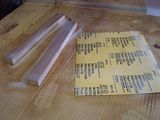

Another tool I made for fretjobs... exacto blade ground with a slight hook and an edge. This does a fine job at cleaning impacted dust from the bottom of the slots. The blue tape is to stop the knurling from scratching the fretboard. I also have a pick set that has a nice hook on it I use time to time.

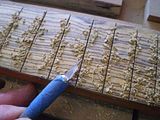
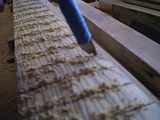
Macassar Fretboard sanded and polished.
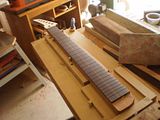
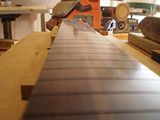
I am supposed to be working on finishing some stuff... but I tell you I love making new things more than finishing things. I have 2 very fine flatsawn pieces of Limba that I am going to use to test the new neck code on my CNC. So lets glue up the blanks.
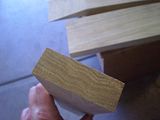
I spent another 15 minutes truing up my scarf jig for the Radial arm saw and the results were worth every minute.
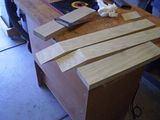
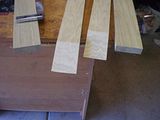
After a very few passes with sand paper attached to the cast iron router sled (machined flat surface) they are ready to be joined. Use the 1/16" stainless pins set wide. Then grab the cut-off from the scarf and use it as a clamping caul. Geometry is fun.

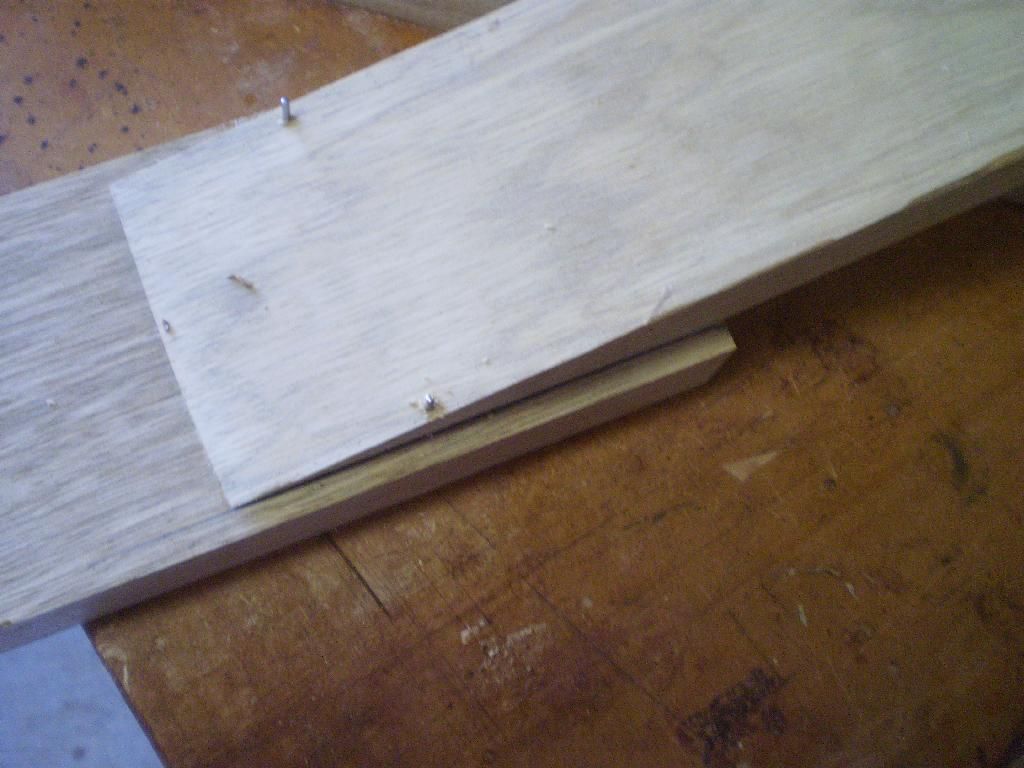
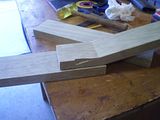
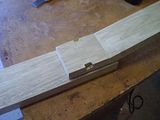
Done back to fretting...

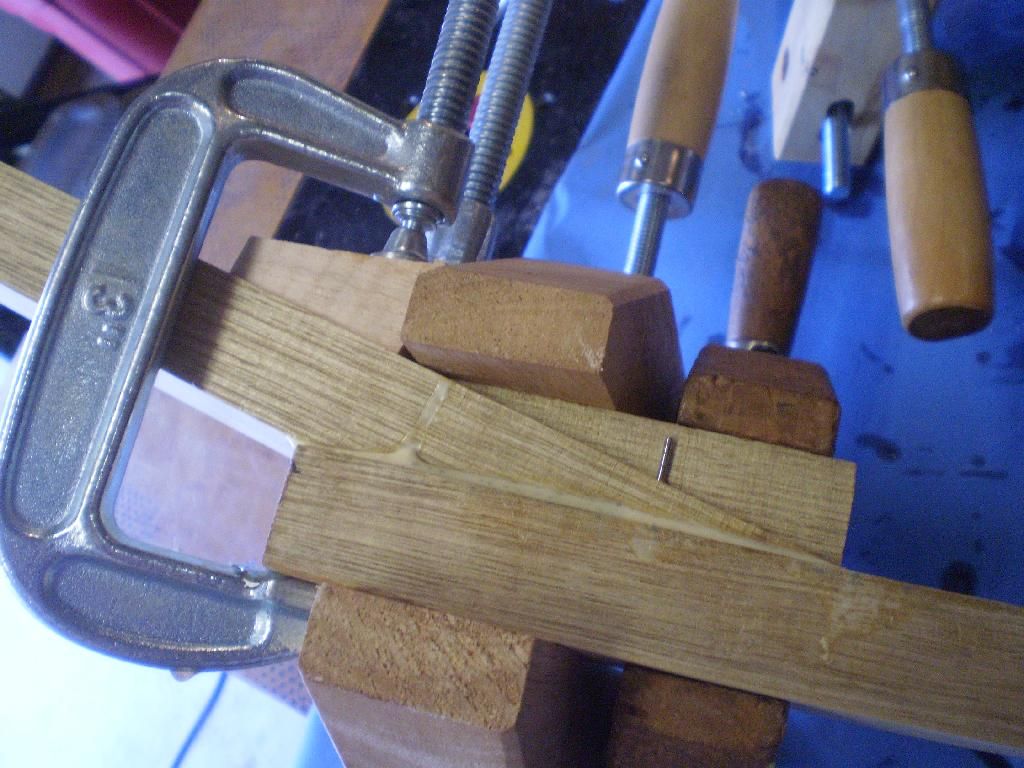
Frets in.
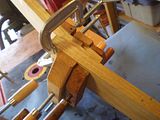
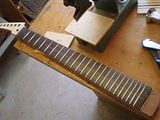
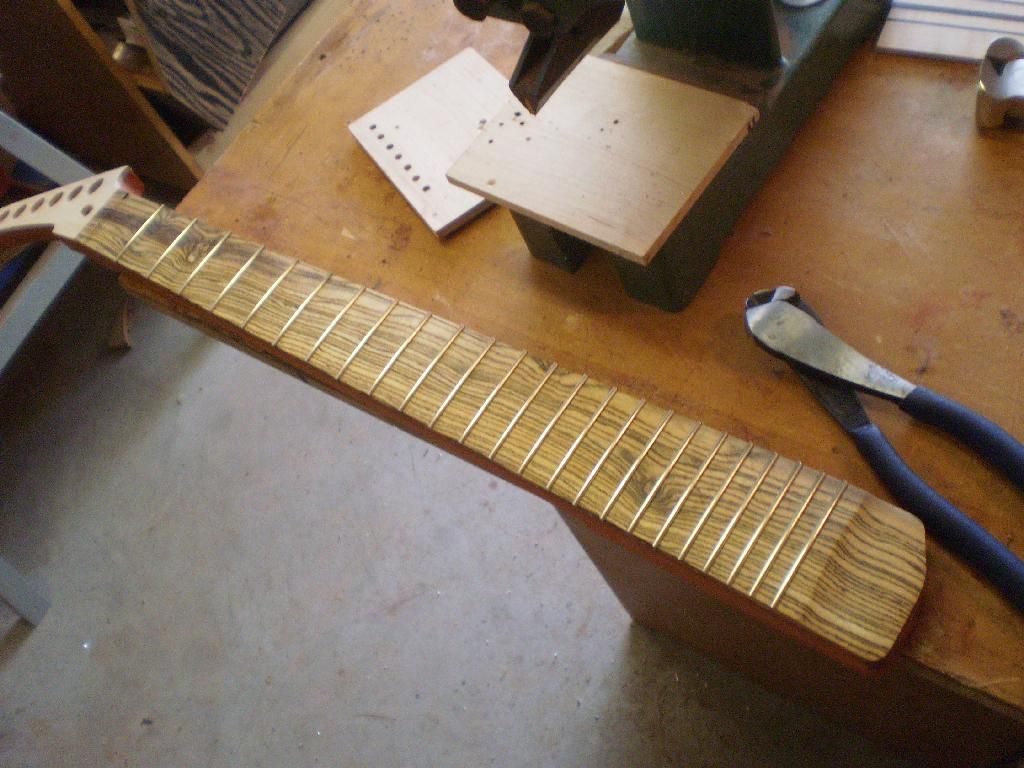
Might as well clean up the neck humbucker while I am here...
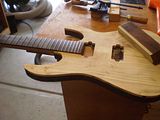
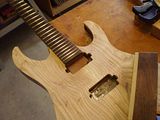




Tuner holes.






I have grown tired of trying to clamp necks to the bench for fretboard radius and leveling. Decided it was time for a better jig. I already do the pre radius on the big belt sander but getting it right requires hand sanding.
The idea is to wedge the unprofiled neck in between some dowel rod pins while supporting the neck so it doesn't flex while sanding. Flex is your enemy. It is why you sand on a fretboard for 20 minutes and it still has a bow in it... if you eliminate the flex in your sanding blocks and in your neck this whole process will only take 15 minutes. So I lost a good 2 hours building the jig but gained it all back using it that afternoon.




Since the back of the neck is supported I needed a block to go under the heal for support and to use as a clamp. Most of my necks from the cnc have the same profile but some of the others are different so I need different size heal supports.




Worked better than I had hoped.


Using some MDF and the jointer (for the edges) I make some finishing sanding blocks. Wet/Dry 220, 320, 400 and some contact cement. I throw them away when they are done. Since they are more for polishing the MDF is usually straight enough although I do check it with my precision straight edge and square.


Another tool I made for fretjobs... exacto blade ground with a slight hook and an edge. This does a fine job at cleaning impacted dust from the bottom of the slots. The blue tape is to stop the knurling from scratching the fretboard. I also have a pick set that has a nice hook on it I use time to time.



Macassar Fretboard sanded and polished.


I am supposed to be working on finishing some stuff... but I tell you I love making new things more than finishing things. I have 2 very fine flatsawn pieces of Limba that I am going to use to test the new neck code on my CNC. So lets glue up the blanks.

I spent another 15 minutes truing up my scarf jig for the Radial arm saw and the results were worth every minute.


After a very few passes with sand paper attached to the cast iron router sled (machined flat surface) they are ready to be joined. Use the 1/16" stainless pins set wide. Then grab the cut-off from the scarf and use it as a clamping caul. Geometry is fun.




Done back to fretting...


Frets in.



Might as well clean up the neck humbucker while I am here...


No comments:
Post a Comment
Note: Only a member of this blog may post a comment.